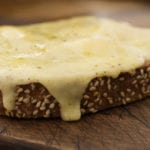 Misconceptions
Misconceptions  Misconceptions
Misconceptions  History
History 10 Amazing Roman Epitaphs
 Weird Stuff
Weird Stuff 10 Niche Subcultures That Are More Popular Than You Might Think
 Mysteries
Mysteries 10 Tragic Disappearances and Deaths in Joshua Tree National Park
 History
History 10 Ways Childhood Really Sucked in the Old West
 Music
Music 10 Name Origins of Famous Bands from the 1990s
 Religion
Religion 10 Biggest Turnarounds by the Catholic Church
 Weird Stuff
Weird Stuff 10 Unbelievable Times Laws Had Unintended Consequences
 Humans
Humans Ten Historic Women Who Deserve Way More Credit Than They Got
 Movies and TV
Movies and TV 10 Films That Spawned Major Lawsuits
 Misconceptions
Misconceptions 10 Phony Myths and Urban Legends That Just Won’t Die
 History
History 10 Amazing Roman Epitaphs
 Weird Stuff
Weird Stuff 10 Niche Subcultures That Are More Popular Than You Might Think
Who's Behind Listverse?

Jamie Frater
Head Editor
Jamie founded Listverse due to an insatiable desire to share fascinating, obscure, and bizarre facts. He has been a guest speaker on numerous national radio and television stations and is a five time published author.
More About Us Mysteries
Mysteries 10 Tragic Disappearances and Deaths in Joshua Tree National Park
 History
History 10 Ways Childhood Really Sucked in the Old West
 Music
Music 10 Name Origins of Famous Bands from the 1990s
 Religion
Religion 10 Biggest Turnarounds by the Catholic Church
 Weird Stuff
Weird Stuff 10 Unbelievable Times Laws Had Unintended Consequences
 Humans
Humans Ten Historic Women Who Deserve Way More Credit Than They Got
 Movies and TV
Movies and TV 10 Films That Spawned Major Lawsuits
10 Crazy Tales Of History’s Food Tasters
Being rich and powerful isn’t all fun and games—it seems like someone is always scheming to get you kicked off the throne. Once poison was viewed as a legitimate weapon (which happened around 331 BC), the fear that a would-be murderer would try to slip something into the food or drink of his victim was very real. And that gave rise to the thankless job of the food taster.
SEE ALSO: 10 Bizarre Origin Stories About Your Favorite Foods
10 Emperor Claudius’s Murder
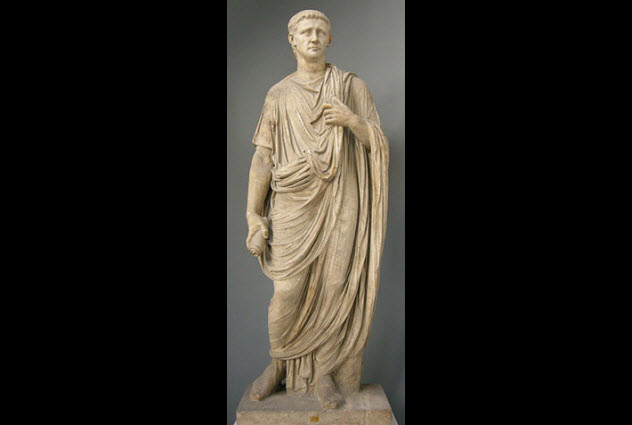
Claudius came to power after Caligula’s murder, and it wasn’t long before he became the target of conspiracies, too. He had a series of failed marriages, and it was his last wife, Agrippina, who plotted to kill him to ultimately put her son, Nero, at the head of the Roman Empire. In his last days, Claudius was overheard being very vocal about regretting his marriage and his adoption (and advancement) of Nero, which historians think isn’t a coincidence.
Just what killed Claudius is still debated, but the popular theory is that his food taster, a eunuch named Halotus, was at the center of the plot. Accounts of Claudius’s death come mainly from Pliny (who uses the presence of a comet as proof of murder) along with Tacticus, Dio, and Seutonius, who all recount the last days of the emperor.
They agree that Claudius was at a banquet on October 12, 54, and that he was served one of his favorite foods—mushrooms—by Halotus. Tacticus said that it was Halotus who served up the mushrooms and the poison. He was supposedly following the orders of Agrippina and using a poison made by the notorious Lucusta.
Tacticus also said that part of the plot wasn’t entirely successful, but it did open the door for the final blow. The poisoned mushrooms did make Claudius sick, and when he called for his doctor, Xenophon administered the fatal dose of poison on a feather that was put down the emperor’s throat on the pretense of treating his illness.
Halotus doesn’t get the blame from everyone, though, and the true cause of Claudius’s death remains a mystery. While it’s possible that the emperor, already weakened from a severe illness a few years earlier, died of natural causes, historians continue to point the finger at his food taster as a likely suspect.
9 Napoleon’s Yellow Dog
Napoleon Bonaparte had something of a complicated relationship with dogs. He didn’t like Josephine’s pug, and he definitely didn’t like Newfoundlands. A Newfoundland had been the first member of the British military’s boarding party to step on the French ship Cleopatra to accept her surrender at the Battle of Trafalgar.
However, Napoleon’s opinion of Newfoundlands changed later when one saved him from drowning off the coast of Elba. It was also on Elba that he owned his only dog, originally acquired to serve as his food taster.
The dog was a yellow retriever–spaniel mix. His presence was one of many safety precautions taken after the deposed leader found out that there were a handful of plots to assassinate him.
Napoleon left Elba in 1815. But while he was there, his dog went from being a safety precaution to providing a sense of security for a man who knew that half the world was out to kill him. Finally, the food taster became a companion, and his stuffed body is now on display at the Hotel des Invalides in Paris beside the tomb of his master.
8 The Mice Of The Beijing Olympics
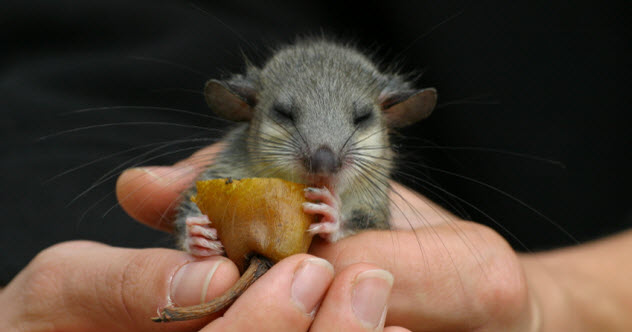
Food tasters aren’t just for the rich and powerful. In 2008, concerns about China’s food safety regulations and the possibility of Olympic athletes in Beijing coming down with food poisoning caused officials to crack down on just what got served to athletes and visitors and how it was handled. That meant a lot of complicated solutions like 24-hour guards placed on kitchens and complete computer monitoring of things like temperature. But it also involved mice being used to sample food before it was put on a human’s plate.
According to the Beijing Municipal Health Inspection Bureau, mice were employed because of the speed at which any toxins, contaminants, or poisons impact them. Anything dangerous in the food would produce symptoms in the mice within 17 hours, and even in 2008, that’s less time than a lab test would take.
Beijing isn’t the only place that uses mice as modern-day food tasters. Although the main concern at the Olympics was food poisoning, mice were used at an Asia-Pacific Economic Cooperation summit meeting as a line of defense against any assassination attempts on its members.
7 Stalin’s Rabbit

Stalin’s “Rabbit” wasn’t an actual animal but a person—and possibly the dictator’s half brother.
No one’s sure who Stalin’s biological father was, but one of the likely candidates was the wrestler and tavern owner Koba Egnatashvili. The wrestler had two legitimate sons, Sasha and Vaso, and when Stalin rose to power, they found themselves in jail with their assets seized.
They managed to get an audience with Stalin, who hadn’t forgotten the boys that he used to play with as a child. He needed trustworthy men around him and installed them in various positions of power. Sasha rose through the ranks of the secret police and was given the nickname “the Rabbit” because of his role as Stalin’s food taster.
The Rabbit was in charge of everything from private meals to banquets with other world leaders. It was all under a chef that had previously cooked for Lenin and Rasputin and who would later have a grandson rise to power—Vladimir Putin.
By the time that World War II was looming on the horizon, Stalin’s suspicions about everyone—especially the wives of his closest advisers—was reaching a whole new level. He ordered the Rabbit’s wife shot, and his old friend continued to serve as his food taster even through her arrest and execution. Stalin honored the Rabbit with medals and promotions throughout the war, and the Rabbit continued to travel to wartime summit meetings with the man who had ordered the execution of his wife.
The Rabbit survived both the war and Stalin despite repeated attempts at discrediting him. Ultimately shuffled off to the Crimea where he was put in charge of the Politburo sanitoriums, the Rabbit died a natural death in 1948.
6 Mark Antony And Cleopatra
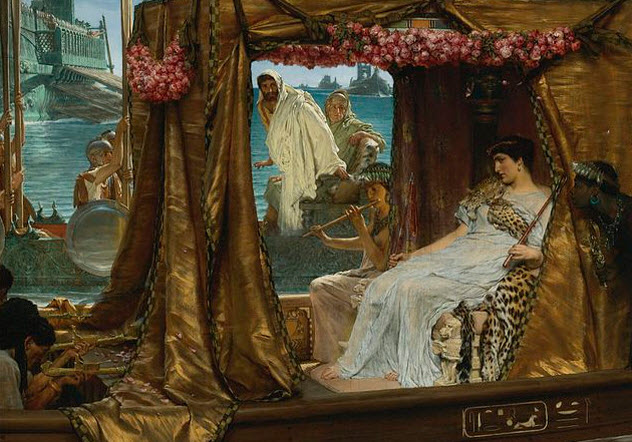
According to Livy, the first instance of murder by poison was a rather dubious case in 331 BC. While it’s uncertain whether the deaths were from poison or pestilence, it started a widespread fear of poisonings.
Poison became the weapon of women who were maneuvering their husbands, sons, and lovers into positions of power, and there are many stories of men and women taking antidotes before eating anything. It was so prevalent that even the most infamous lovers of ancient times kept food tasters on hand to protect against the machinations of the other.
Mark Antony’s distrust of Cleopatra was so great, said Pliny, that he kept a food taster on hand all the time in case she decided to try to get rid of him. The story says that Cleopatra was incredibly offended by this—not because he didn’t trust her but because he thought that using a food taster would be enough to save him if she put her mind to killing him with poison. Coating her prayer beads with poison, she dropped them into his wine as a demonstration of how vulnerable he still was.
Another version of her near-poisoning of Antony (despite his food tasters) suggests that her sleight of hand was done to alleviate his fears by stopping him before he drank the deadly mixture. In this version, she dipped some flowers of a garland in poison before a banquet. During the banquet, she crowned him with the garland and later suggested that they use the flowers to flavor their drinks.
When Antony went to drink the poisoned wine, she stopped him, summoned a prisoner, and gave him the wine. The man dropped dead, and Cleopatra used it to show that Antony needed to trust her above his food tasters.
5 Margot Wolk
Until Claus von Stauffenberg’s failed attempt at assassinating Hitler, Margot Wolk and the other 15 young girls that served as his food tasters were allowed to live at home. They were only taken to the Wolf’s Lair when Hitler was there and were tasked with sampling the array of vegetarian foods that were meant for his table.
After the assassination attempt, though, they were moved to a nearby boarding school. Wolk remembers days that were filled with fear as well as the night that she was raped by an SS officer.
Wolk is the only survivor of the group of girls who were tasked with being Hitler’s food tasters. The others were executed by Soviet soldiers. Wolk was saved by a lieutenant who put her on a train bound for Berlin before the Allies marched in, and she was saved a second time by a doctor who hid her from members of the SS as they searched for fugitives.
She only told her story decades after she had escaped from the Wolf’s Lair, was reunited with her husband, and realized that she would never have children after enduring the brutality of Soviet soldiers. While many starved during the war years, Wolk was forced to taste some of the richest, most decadent foods in war-torn Germany. It left her with a constant, paralyzing fear of food.
It was years before she could enjoy eating again. But through it all, she never lost her sense of humor. It was the only way that she could get through the terror of sampling food and then simply waiting to see if she would die each time.
4 Elizabeth I’s Food Tasters
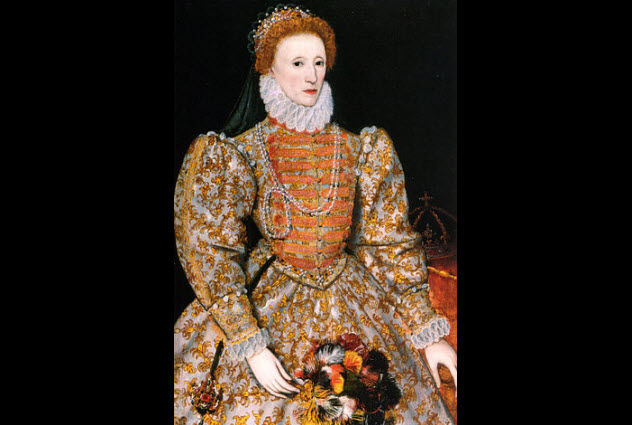
The English monarchy had no shortage of enemies during the reign of Elizabeth I, and the fear that someone would try to assassinate her by poisoning was a very real one. In 1594, a 70-year-old Jewish doctor who had fled the Spanish Inquisition was executed for his supposed involvement in a plot to poison the queen, even though no one believed that he was actually guilty.
The would-be poisoner would go on to be one of the inspirations for the character of Shylock, but the danger to the queen was still a very real one. And that makes it perhaps a bit strange that the process of food tasting in Elizabeth’s court was a highly formalized, highly ritualized one.
Documents describe an unmarried countess and an older woman performing what we can only say was a food tasting ritual. It involved first the wiping off of all the plates that would be set at the table and then the entrance of 24 royal bodyguards—one for each course to be tasted. Noblemen would receive each of the dishes, and a female food taster would serve each of the plate-bearers a bite from the dish that he held.
After an appropriate amount of time had passed—which was marked with the playing of drums and trumpets and presumably observed to make sure that no symptoms of poisoning were going to show themselves—another group took the plates into the private inner chambers of the queen. It was only then that she would select the ones that she wanted and pass the rest on to other members of her court.
3 Poison-Tasting Ants
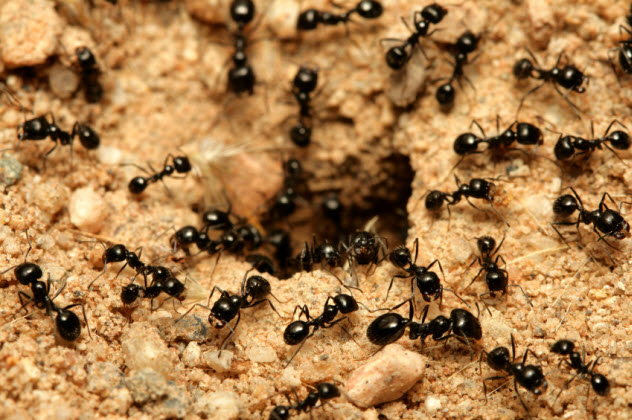
It isn’t just human royalty that has poisoned food to fear. It’s insects and vermin, too. At least one group of pests have developed a method of using food tasters to help secure the safety and health of the rest of their colony.
According to a recent study published in Animal Behavior, ants will deviate from the normal roles that they fulfill within a colony during times of stress or famine. When deprived of food and water for 48 hours (some ants can survive time frames as long as eight months of famine), some of the older worker ants gave up their foraging behaviors and started staying at home.
They started overseeing food supplies at home, eating what food they did have, and feeding the other ants through regurgitation. University of the West of England researchers dubbed them “living silos” and think that they’re not just storing food, they’re testing it for toxicity.
The ants that filled this role of living silos were all older ants approaching the end of their life cycles anyway. The researchers think that means they’re absorbing some of the potential threats to the colonies.
The living silos generally stayed just outside the area that housed the brood workers, the ant larvae, and the colony’s queen. Even if they do happen to consume poison—or other dangerous substances—and it doesn’t kill them outright, regurgitation and the mixing of food means that any potential poisons are so diluted that they’re not nearly as damaging when they get to the younger workers.
2 The Food Tasters Of The Tudors

Henry VIII is likely one of England’s most infamous monarchs, and he was known almost as much for his appetite as he was for his ever-changing list of wives and mistresses. The feasts laid on the table of a Tudor court were legendary, with exotic meats from whale and peacock to beaver tail, organs, cow udders, and spleens.
That was all washed down with an estimated 2.3 million liters (600,000 gal) of ale and 285,000 liters (75,000 gal) of wine every year. The centerpiece of a feast was often a cooked peacock with all its feathers replaced or a sculpture that stood several feet high and was made entirely from sugar and almond paste.
Unfortunately, the role of the ever-present cupbearers and food tasters has been mostly lost, but we do know some pretty strange things. Food tasters were present at every one of Henry VIII’s feasts, and they spent the entire time on their knees. Given that a single feast could last hours, it had to be an excruciating job—and not just because of the fear of poison or the amount of food they would have been required to eat.
The job wasn’t without perks, though, and we know that Henry VII rewarded his chief food taster with an incredibly poetic gift. William Berryman was gifted the lease of a tavern (called le Rose super le Hope) and a brewery in London. His rent? A single red rose presented to the court at midsummer.
Although most names have been lost, historians are somewhat sure that the family of John Dee, the astrologer and occultist who became one of Elizabeth I’s most trusted advisers, got their start as food tasters in the court of Elizabeth’s father. Dee’s father likely occupied the oddly named role of “gentleman sewer,” serving as Henry VIII’s personal food taster and wine steward.
1 The Lab Of Recep Tayyip Erdogan

Turkey’s President Recep Tayyip Erdogan lives in a $600 million palace with around 1,000 rooms. At least one of those rooms is dedicated to his full-time food analysis crew. According to his personal doctor, all of the president’s food is not tasted in the time-tested, old-fashioned way but is instead examined by a team of five experts working 14 hours a day to check, double-check, and recheck the palace’s food for everything from poison to radioactive contaminants and bacteria.
In some cases, even that amount of security isn’t enough. Dr. Cevdet Erdol has said that they contract with other off-site facilities in other cities to check some of the samples.
On one hand, some people say that it’s a perfectly acceptable precaution for a leader in an area of the world that is in near-constant turmoil. But others insist that it’s just one more example of the opulence in which the president lives and that it shows just how far removed from the common man the upper echelons of society really are.
The idea of a Turkish food taster is nothing new, and even Mustafa Kemal Ataturk had one. Supporters of the measures also cite the fate of Turkey’s eighth president, who died of an apparent heart attack in 1993.
The family of Turgut Ozal claims that his cause of death was actually poison, administered in a glass of lemonade served to him at a Bulgarian Embassy reception. According to the family, those behind the murder were protected by a massive network of ultranationalist conspirators who were working with the military to overthrow the Turkish government, which makes modern-day food tasters a completely legitimate safety precaution.



